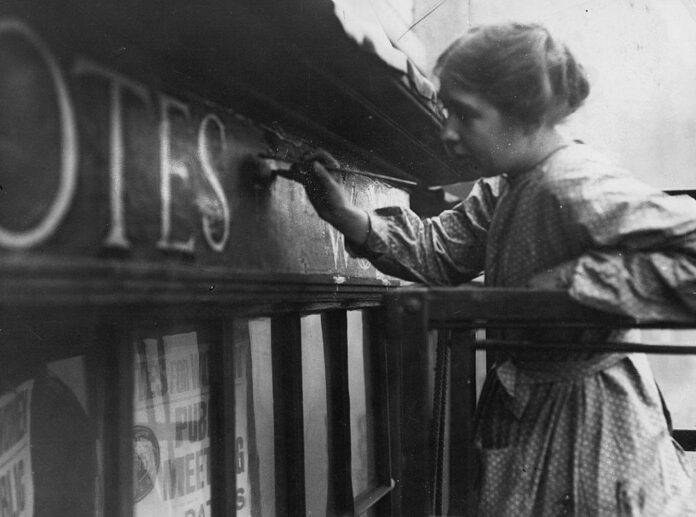On International Women’s Day, it’s not uncommon to see celebrations of the groundbreaking activism of suffragette Emmeline Pankhurst, but a new musical gaining popularity in London puts a lesser known Pankhurst under the spotlight—her daughter Sylvia.
Sylvia Pankhurst made important advances on what her mother was able to achieve for women’s rights—specifically campaigning to win the right to vote for working women. The musical does many things: It posits Sylvia as a more “woke” version of her mother, whose ideas resonate better with today’s intersectional fourth-wave feminism—and it also sheds light on how she used her artistic talent to further her campaign.
The tongue-in-cheek musical is set to a score of hip-hop, rap, soul, and funk, alongside razor-sharp choreography, and dramatizes the two women’s disagreements against the backdrop of the struggle for emancipation. Powered by the star casting of Beverly Knight as Emmeline and Sharon Rose as Sylvia, the musical focuses on the women’s ideological differences—Emmeline won the vote for the first million (wealthy, married, older) women and believed in using violent direct action; Sylvia advocated for universal suffrage including the vote for all working people, and using peaceful methods.
The show also raises the profile of the younger Pankhurst as an artist, whose contributions have largely been neglected by the canon. She attended the Manchester Municipal School of Art and went on to become the only woman in her year to receive a scholarship to study at London’s Royal College of Art.

Sylvia Pankhurst, An Old-fashioned Pottery Turning Jasper-ware (1907). Photo: © Estate of Sylvia Pankhurst.
Sylvia deployed her artistic talent to generate support for the cause. In 1907, she traveled around Northern England and Scotland painting intimate portraits of factory workers in order to humanize their plights, documenting the untenable working conditions and insufficient remuneration experienced by women. Her portraits offer rare images of the working class women of the period, who Pankhurst painted with empathy and humanity rather than depicting them as a backdrop for a scene.
She also directed her creativity into making pamphlets, badges, banners, and flyers, first for the Women’s Social and Political Union which her mother and sister founded in 1903, and later for the East London Federation of Suffragettes, which she founded in 1912 after being ousted from her mother’s organization.
Sylvia subsequently gave up art to devote herself full-time to the campaign for suffrage, and it is not known exactly where all of Pankhurst’s artworks are today. Some are in the collection of the artist’s grandchildren, Helen Pankhurst and Alula Pankhurst. Tate acquired four watercolors from them in 2018 to mark the centenary of the first victory for women’s suffrage, and two of them are currently on view at Tate Britain. Executed during her travels in 1907, they depict women working in cotton mills in Glasgow and Staffordshire potteries. In her writing, Pankhurst wrote with empathy about “the almost deafening noise of the machinery and the oppressive heat,” which was “so hot and airless that I fainted within an hour.”

Sylvia Pankhurst, On a Pot Bank Finishing Off the Edges of the Unbaked Plates on a Whirler (1907). Photo: © Estate of Sylvia Pankhurst.
“Sylvia was an artist as well as a champion of working women’s rights, her first passion not as well-known as her second,” Helen Pankhurst said in a statement at the time. “In these beautiful pieces, these interests are powerfully combined.”
A duo of chalk portraits of Sylvia’s married lover, Labour leader Keir Hardie, hang in London’s National Portrait Gallery. Sylvia herself donated one to the gallery in 1956, writing of the work, which is an incomplete preliminary study: “I should not have ventured to offer it to the National Portrait Gallery, save for the fact that I believe you have no other portrait of Keir Hardie, whose place in history is of importance… I think it does give an idea of the kind of man Keir Hardie was.”
Pankhurst’s work has gone on to inspire contemporary artists including Olivia Plender, whose 2020 exhibition at the Amant Foundation last year, “Neither Strivers Nor Skivers, They Will Not Define Us,” took direct inspiration from research into Pankhurst’s biography.
Sylvia is playing through April 8 at The Old Vic in London.
More Trending Stories:

























